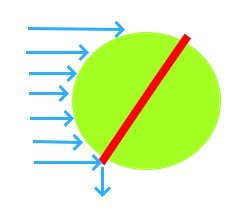This year, there is a super-slow motion camera at 1B. You can really see how the bullet spin pitches are thrown. I've not seen a backspin rise during the playoffs.
For a rise, the ball's axis of rotation appears to about 20 degrees from horizontal, resulting in the top seams being behind the ball and the bottom seams being exposed.
The bottom seam deflects the air down, thereby causing an upward force on the ball. Thus, the ball is pushed up.
Vawter was throwing a bullet spin changeup.
For a rise, the ball's axis of rotation appears to about 20 degrees from horizontal, resulting in the top seams being behind the ball and the bottom seams being exposed.
The bottom seam deflects the air down, thereby causing an upward force on the ball. Thus, the ball is pushed up.
Vawter was throwing a bullet spin changeup.






